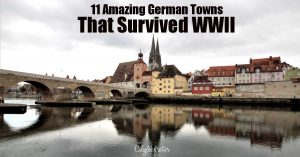
Disclaimer: This post contains affiliate links. If you click on one and make a purchase, I might make a little extra spending money, at no extra cost to you. As always, all opinions are my own and these products/services have been found useful during our travels and come highly recommended to you from yours truly!
Along my travels, and having been lucky enough to live in two of these cities, I’ve come to learn which cities were almost entirely spared from the ravages of war or were only minimally destroyed. So I’ve gathered a list of cities and towns throughout Germany which were untouched and still offer that historic Medieval charm we all crave to see and feel. And while there are many destinations in Germany to visit which also survived, I have yet to visit all of them.
Want to Visit these Charming Medieval Towns? PIN IT FOR LATER!!

How to AVOID Looking Like a Tourist in Europe
ULTIMATE LIST of Half-timbered Towns in Germany
It’s near to impossible to travel through Europe and find a town or city completely intact, untouched from the ravages of the Second World War. War seeps into every aspect of life no matter how far removed from the front line. WWII saw centuries of art, valuable relics and history wiped away.
While the Third Reich was bombing Europe, Europe was retaliating and Germany received its own fair share of damage. Many of Germany’s largest cities like Dresden, Würzburg, Munich, Nuremberg and Berlin were practically reduced to a pile of rubble. Luckily though, since then, Europe has obviously been beautifully rebuilt to its former glory and today you can hardly tell that anything was once a pile of bricks.
Bavaria
1. Regensburg
I have been lucky to call Regensburg home for 5 + years now and every day I still fall in love with its magical Medieval charm! It is one of the oldest cities in Germany that was settled by a 600-soldier Roman camp on a hill at the empire’s border in 90 AD and has been remarkably preserved and is a UNESCO World Heritage Site. The city suffered minimal damage during WWII, with the loss of an old Romanesque church of Obermünster which I recently discovered is still laying partially in ruins and a Jewish Synagogue which is today, finally in the process of being rebuilt! It is the only example of an intact medieval city in the country.
Many say the city was sparred by the intense fog that is known to permeate every corner of the town during because of the Danube River. However, the railway station, freight yards and Messerschmidt air craft factory were all destroyed with a small portion of the historic Stone Bridge receiving damage. Today, you can stroll through the winding alleys lined with antique shops and explore the Regensburg Cathedral just as it was before the war and enjoy one of most popular cities in Bavaria which is an one of the best day trips from Munich!

2. Passau
Located on the border between Austria and Germany at the confluence of three rivers, the Inn, the Ilz and the Danube, Passau is a charming city straddling an island. Much of the city was destroyed during a fire in 1662 and since its reconstruction, the city has remained practically unchanged. During the Second World War, the town saw minimal damage, but the Kaiserin-Elisabeth-Brücke (Empress Elisabeth Bridge) was destroyed on the same day that Hitler had committed suicide. The city of Passau was bombed three times during the last months of the war, but the historic city center remained practically unscathed. The beautiful city of Passau is therefore one of loveliest cities to visit in Germany and one of most underrated cities in Bavaria!


3. Bamberg
Spared twice from the destruction of war during the Thirty Years’ War and the Second World War, it’s a miracle that Bamberg has held on to its historic sites. Dating as far back as 902 and the largest amount of unaltered buildings (2,400) and the minimal damage that the town sustained during the war, Bamberg is a UNESCO world heritage site. From its four-spired cathedral to the Baroque Residenz and the Old Rathaus vibrantly decorated in Lüftmalerei, Bamberg is a city frozen in time. The town oozes with charm as half-timbered houses are scattered throughout the town and is on of the best small towns to visit in Bavaria!


Baden-Württemburg
4. Heidelberg
By far one of the most popular cities in Germany. Situated in a wooden gorge on the River Neckar, I also had the privileged to live in Heidelberg for a year while studying abroad. The town has exceeding charm drawing hopeless romantics to the city since 19th century Romantics had described it as a place of beauty and a “royal residence of the intellect”. During the Second World War, Heidelberg was a NSDAP stronghold and a massive amphitheater was built atop the Heiligenberg to hold rallies. During Kristallnacht (Night of Broken Glass), Nazis burned down 2 Jewish synagogues. Besides that, the ravages of war were gentle to Heidelberg and only on March 29, 1945, when the German troops were leaving the city, they destroyed three of the arches of the Alte Brücke (Old Bridge) to prevent the Allies from crossing the river. The next day the citizens willingly surrendered.
It is believed that Heidelberg managed to escape WWII practically unscathed because the US. Army wanted to use the city as a garrison after the war. Heidelberg was neither an industrial city nor a transport hub and didn’t pose any reason for its destruction. The US Army moved into the untouched Wehrmacht barracks and have stayed ever since, although they have started closing portions of the base.


5. Tübingen
First mentioned in 1078, the university town of Tübingen didn’t really bloom until a university was established here 400 years later. Like Heidelberg, a synagogue was burned down here also on Kristallnacht but the own managed to avoid destruction in part because of the actions of a local garrison doctor, Theodore Dobler who initiated a peace treaty. Like Heidelberg, the city was sparred and the Allies focused more on Stuttgart and Mannheim. The citizens willingly surrendered to French troops and after the war, Tübingen was occupied by the French army until the end of the Cold War.

6. Esslingen
Just 15km outside of Stuttgart is the half-timbered medieval town of Esslingen, an easy day trip from Stuttgart, which saw some destruction but not as much as its neighboring city. Some 60 houses were completely destroyed, 75, heavily damaged and a plethora more only slightly damaged. However, the town center is one of the best preserved Medieval towns in Germany and has the oldest row of inhabited half-timbered houses in the country while the entire town has over 200 half-timbered houses. Esslingen has around 800 historical buildings from all centuries from the Renaissance to the modern times, more than 1,200 years of architectural history in a very small space.


Hesse
7. Wiesbaden
Idyllically located at the foothills of the rolling Taunus is the town of Wiesbaden which has been settled since the Romans had a fort here. Prior to WWI, the town had been a popular spa town and today, the city still enjoys some of that glory. Just 40km west of Frankfurt, the city saw little to no damage. Like many other towns throughout Germany, the synagogue was destroyed during Kristallnacht. However, between 1940-45 there were 66 days of bombing of Wiesbaden destroying 25% of the city but it is still considered to have escaped the war in relatively good shape. The Neues Rathaus lost must of its neo-Renaissance facade during the war. On February 2, 1945 a planned air raid attack was unsuccessful due to bad weather, therefore sparring the town.


Saxony-Anhalt
8. Wernigerode
Located at the foothills of the Harz Mountains, Wernigerode is a perfectly preserved medieval half-timbered town with colorful houses one after another earning it the nickname “the colorful city in the Harz” by German writer Hermann Loens in the late 19th century. Many of the towns in northern Germany managed to escape the war with little to no damage, however, being under Soviet occupation after the wall many buildings weren’t very well maintained. After the fall of the Berlin Wall, the town began to renovated many of the hundreds of half-timbered houses that permeate this town. Today, Wernigerode is one of the best towns to visit in Northern Germany!
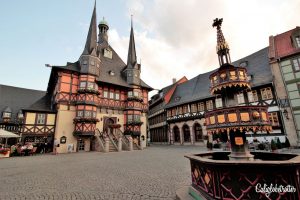

9. Quedlingburg
Straddling the Bode River in the foothills of the Harz region is the UNESCO World Heritage Site of Quedlinburg. It is one of the most romantic medieval towns in Germany with a rich history and architecture. Dating back to the 10th century, Quedlingburg was ruled by King Heinrich I who is credited with being the founder of medieval Germany. Therefore, the town is known as being the first capital of Germany and because of that special history, the Nazis used the city for Nazi propaganda. Heinrich Himmler saw himself as the reincarnation of the “most German of all German” rulers. But despite all of that, the town somehow magically escaped the horrors of WWII. After the war, the town was located within the Soviet occupied zone and again many of the houses became a little shabby but were later renovated but today it is one of Europe’s best preserved medieval towns.


Lower Saxony
10. Goslar
Dating as far back as the 10th century, the medieval center of Goslar at the foothills of the Harz region escaped WWII with practically no damage in part because during the war, a POW camp was formed here and the town had quickly capitulated making for a smooth transition to the Americans before it became part of the British Occupied Zone. The town is listed as a UNESCO World Heritage Site with over 1,800 half-timbered houses, the epitome of adorable fairy tale towns in Germany!


The neighboring town of Braunschweig though had received severe damage towards the end of the war as the Germans pulled out of Russia, destroying the largest collection of half-timbered houses in the country.
North-Rhine Westphalia
11. Monschau
Deep in the hills of the North Eifel, is the picturesque half-timbered town of Monschau which has remained vastly unchanged over the course of the last 300 years. Located near the Belgian border at the westernmost part of Germany, Monschau is located within the Eifel National Park which is where the Battle of the Bulge took place during WWII. While many German and American soldiers lost their lives here, the historic town which dates back to the 13th century remained unscathed. Today, it’s one of the best half-timbered towns in Germany to visit and every house, every corner and every street is even more picturesque than the last!


I have to say thank god many of these charming towns, and sooo many more didn’t fall victim to the ravages of war to the point that they couldn’t be saved or had to be rebuilt from the ground up. Visiting these towns are like stepping back in time long gone.
While other towns like Rothenburg ob der Tauber and Würzburg both sustained heavy damage and were completely rebuilt to their former glory, they still hold the scars of the past, but that doesn’t make them any less charming. In fact, that even makes them that much more interesting and should be appreciated even more for the dedicated attention to detail when it came to restoring these towns to their former glory.
I once had a friend mention that he was disappointed to visit Germany only to have everything be a replicate of the original because it had been destroyed in the war, but I found his comment to show the lack of knowledge and understanding of European history. Even before WWI and WWII, many towns were constantly destroyed or burned to the ground throughout history, for example during the Thirty Years’ War, and as always, was rebuilt to their former glory and then some. It’s only natural that towns should evolve over time, but it’s so nice when they manage to hold on to that special charm.
If you’re interested in visiting Germany and are looking for more information, I highly recommend using the DK Eyewitness Travel Guide! Without these guides, I would be lost! This is my travel Bible!
 |  |  |  |
Disclaimer: This post contains affiliate links. If you click on one and make a purchase, I might make a little extra spending money, at no extra cost to you. As always, all opinions are my own and these products/services have been found useful during our travels and come highly recommended to you from yours truly!
Day Trips to the BEST Small Towns in Germany:
40 of the BEST Day Trips from Frankfurt
The MOST Picturesque Half-timbered Towns in Germany
3 CHARMING Half-timbered Towns You’ve Never Heard Of
The BEST of Germany’s Romantic Road
Liked this post? PIN IT FOR LATER!!
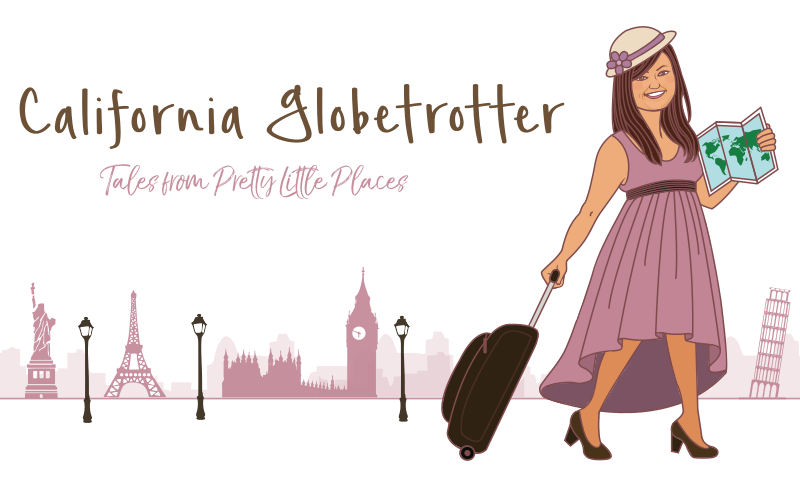
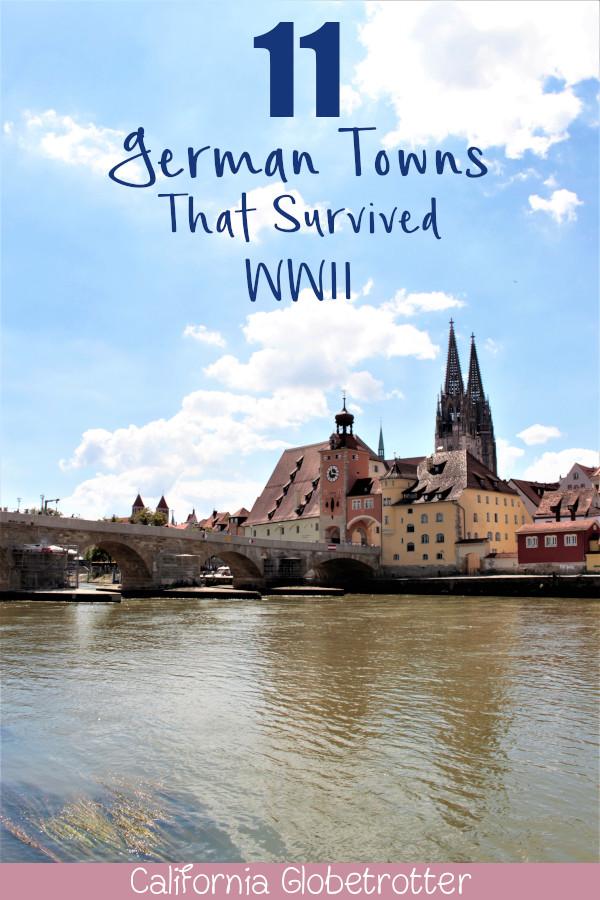
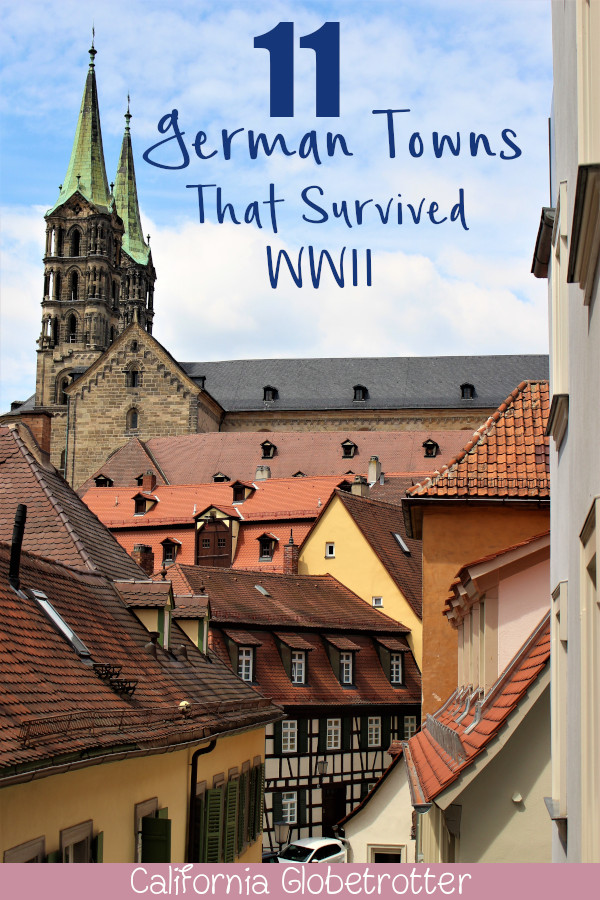




This is such an interesting blogpost, thank you! I visited Heidelberg last summer and was pretty amazed that the town wasn’t destroyed because the Americans already decided they wanted to use it as their base. Even though we as Dutch suffered a lot during WWII (many died of starvation), Churchills plans to simply bomb the hell out of the country to get it to its knees have always struck me as pretty unsavoury. But I guess that’s what war is.
#WanderfulWednesday
Ya war is never glorious and that’s unfortunate to hear!
So so many great options! I’ve only ever been to Berlin so I have so much more exploring to do, and these all look like great places to start! 🙂
I think that those towns that were rebuilt after the war is such a tribute to the perseverance and strength of the people who lived there. I’ve driven through Bamberg and I thought it was beautiful. I’d love to go back and actually explore it. #wanderfulwednesday
Oh absolutely! It’s so impressive the way they meticulously rebuilt those cities!
Love all the pictures. Monschau, Regensburg and bamberg are lovely towns. #wanderfulwednesday
I’ve only visited two of the cities on this list and would really love to visit the rest. When I was living in Schweinfurt I always felt sad that the city was so heavily bombed not only because there were no pretty half-timbered houses (or at least very few) but also it was so traumatizing for the residents. I’m glad not every city in Germany was that way. #WanderfulWednesday
I felt that way about visiting Dresden!
Wow! I thought after visiting Hamburg, Berlin and Munich I’ve pretty much seen all the interesting towns/cities in Germany but omg have I been wrong! All those pictures look great plus you can never learn enough about WWII and what better place to do that than in cities that have been severely affected by it? Thanks for sharing! 🙂 #WanderfulWednesday
Oh Germany is sooooo much more than just Munich, Berlin and Hamburg! It’s all about the small towns!
Glorious photos. Some of those towns are amazing!
Beautiful pictures, Lori! So much inspiration!
Thanks Erin!
Lorelei, this is a great post! It is good to know about the number of architectural gems that survived the war. I have to agree with your last comment. I respect people’s opinion but I am not sure what is the point with talking about the reconstruction of Europe after the war in negative light. I am grateful a plan was executed to save the many cultural treasures of the continent. #WanderfulWednesday
Love Germany. love German towns. Love your comment about rebuilding, didn’t realize German towns were rebuilt to look the same as before. In London you could always tell where the bombs had hit because in the middle of beautiful Edwardian houses there would be some very modern and uninspired squat buildings. Ein bisschen traurig!
Sometimes you can see that here in Germany too – a big 60/70s style cement building in the middle of a beautiful town!
What a brilliant selection of gorgeous towns you’ve featured here! It’s such a great reference for people wanting to visit the best of Germany and I was so interested in the history behind which towns were bombed and which spared. Thanks for sharing on #FarawayFiles
Fascinating post, Lori, and great idea for one too. I think you made a great point at the end about destruction having happened throughout history, and when towns can be rebuilt to hold on to their prior charm, even better. #farawayfiles
It’s important to reiterate that even though it was rebuilt, it’s not fake
Nice post! I wish I could visit them all as they are so quaint and beautiful! I just found your blog for the first time today. I don’t see you on Facebook travel blog groups. You should join!
Hi Tami, thanks for stopping by! I’m in several FB groups and host #TheWeeklyPostcard 🙂 so I’ve got my hands full!
This is such an informative post. We were lucky to see beautiful Bamberg on our river cruise and just looking at villages as we sailed down the river, I agree that Germany’s small towns and villages are exquisite. Whether they are original or whether buildings have been restored, there are so many stunning streets to visit.
#farawayfiles
awesome post. content is worth preserving
I know I’ve said this before, but your photography is so beautiful. Germany is such a unique country, and your love for it shines through in your posts. I have the good fortune to visit Heidelberg as a teen, and I still remember what a lovely place it was! At the time I wasn’t aware that it had been spared damage in the war. #farawayfiles
Aw thanks Hilary!
My husband studied in Köln which did receive a ton of damage during WW2, and when we visited in 1994 on the 50’th anniversary of D-Day it was very interesting to see the evidence and restoration all over the town. These lovely little villages and half-timbered towns are a treasure and it is very lucky that they were preserved and still available for generations to enjoy. Thanks for sharing this extensive list. Cheers from Copenhagen, Erin #FarawayFiles, Erin
Oh how interesting! I bet that was quite the experience!
I actually haven’t been to any of these towns, but they all look adorable. So lucky they weren’t damaged in the War. I have been to Berlin and it is really impressive how the city has been rebuilt eventhough it has taken a long time. #TheWeeklyPostcard
It’s almost unimaginable that at one time it was practically all destroyed!
Some amazing towns, I have only been to a couple of them so far. One of my favorites in Germany was Rothenburg ob der Tauber which suffered a bit of damage but was spared I believe by the Americans because someone decided it was too lovely to destroy 😉 Love that photo of Bamberg!
Ya I believe Rothenburg was 40% destroyed but luckily beautiful rebuilt! Love that town too!
I had no idea that in Germany is so many that nice cities. I am still wandering. I have never heard about some of these cities. This goes straight to bucket list and Pinterest for later. #TheWeeklyPostcard
I love the history in all these towns, the photos are brilliant.
Gah. So many places I want to visit. Your pictures are definitely gorgeous and you capture these towns so well! Love living vicariously through you.
Thanks Sara!
They are all so charming! We’re definitely pinning this for later, because we want to visit all of these towns! I wouldn’t have thought about the connection of having survived WW2 unscathed, but I’m glad they did. And that you put this list together. Great stuff, as always! #TheWeeklyPostcard
Thanks guys! As a big WWII buff I was curious how many towns we had visited that were unscathed!
Oh, Lolo, no wonder that you don’t miss California when you live in such a beautiful city like Regensburg. I miss living in an European city, although I don’t feel like giving up California weather for any of them. It’s a miracle that al these German cities missed the Allied forces bombing. #TheWeeklyPostcard
Certainly makes it hard to consider leaving!
Thanks for this fantastic post, and what a great idea for a blog post in the first place! Though I’ve travelled to Germany many times over the years, I’ve still missed a few on your list, so will definitely make a point to visit them in future. I visited Dresden a few years ago to see the wonderful painstakingly restored Frauenkirche. It was destroyed during WW2 bombing, along with the rest of Dresden. I was very moved by it all …
I felt the same way when we visited Dresden! Hard to imagine the pain and suffering they endured!
This is an amazing list – thanks for sharing! I remember reading about many of these towns through earlier blog posts of yours, but it’s super convenient to have them consolidated into one list for ease of reference 🙂 I haven’t been to any, and they all look lovely! I’ve been to cities like Dresden, Rothenberg, Würzburg and Nuremberg, and I think the WWII impact was most obvious in places like Dresden. War is destructive on so many levels, and yet we [or more accurately, some people in power…] seem intent on rushing headlong into it.
War is such an awful and the atrocities that humans inflicted upon one another terrible, not to mention the loss of so much history. Nice to see places survived and still so beautiful.
Still can not believe that we have never visited Germany, and it’s not too far away. Great post that we have pinned for future! #TheWeeklyPostcard
I’m going on a business trip to Germany for a couple of weeks and I’ll be 10 minutes by train away from Heidelberg, I can’t wait to go and photograph it 😀 Also, I need to visit Regensburg asap, your Facebook photos are annoyingly beautiful, haha
Haha thanks Vlad! How long is a couple of weeks? My stepmom is coming for a visit at the end of Nov and we’re going to Heidelberg!! And if you have time, Regensburg is an easy 3-4 drive/train ride from Heidelberg if you want to come visit!!
Ahhh I love German architecture. Your pictures capture everything perfectly as usual 🙂
Great list of German towns – pinning it for reference – I was in Bavaria earlier this year and completely loved the small towns – spent some time in Mittenwald & Klais…. definitely going back to Germany for more!! #FeetDoTravel
Mittenwald is a beautiful town!
Of these 11, I’ve only been to Heidelberg. There was so much destruction with the both of the World Was, I’m surprised much of anything survived!
I’ve never been to any of these (do I even deserve to have a German passport? lol!) but they look stunning!! Definitely proves to me that I totally need to explore Southern Germany properly one day!
How do you find all of these off the beaten track places!? They’re absolutely beautiful and you’ve captured them so well in photos. Definitely pinned for later 🙂
I’m addicted to Instagram! Haha
It really does feel like going back in time looking at your photos of these beautiful cities. Friends have just moved from Wiesbaden and I’m kicking myself for having not made the effort to visit and see that lovely town. I’ve pinned this to refer to later.
I love Germany and even though I have mainly been to the bigger cities, I really want to explore smaller towns and take in their charm and atmosphere, They look amazing! Love those buildings in Bamberg! You are convincing me to explore Germany and spend more time in the country!
Germany has soooo much to offer! You should definitely come! It you come to Bavaria, hit me up!
While I loved visiting Munich, I was all too aware how it had been destroyed during WWII. I’d often wondered where in Germany had survived and you’ve finally given me some answers on it. I was aware of many of these already from your previous articles but Bamberg and Passau really are two places I’ve become increasingly interested in visiting. Great list Lorelei!
Maybe that means you’ll start exploring Germany! 🙂
Wow! They are all so beautiful!
Thank you for the very interesting and educational post! I was recently offered a Pflegehelferin position in Regensburg but wasn’t too impressed with its location. Reading your post makes me want to re-consider. I want to move out of San Diego, it’s so crowded and I miss the rolling hills, meadows and 4 seasons! Just not sure if I can make the move. It seems daunting.
If you’re considering a move to Regensburg be sure to check out the full post to that! It may change your mind! We’re in the center of Europe in my opinion and takes only a few hours to get anywhere
Superb & informative article!
You missed the best towns in the east. the very important city of Goerlitz is beautiful, Zittau another
I didn’t miss them, I just haven’t been there yet! ?
I love the east so a few mentions..Probably one of the largest german cities the came away almost truly unscated is far in the east/ Goerlitz. During the DDR days it was a sorry mess of dilapidation but in the last 20 years is a wonderful place. I also vote for Zittau in that little corner below goerlitz in the upper Lausitz,and while you are there Pirna on the elbe south of Dresden in the middle of the sandstone ehrzgebirgedurchbruck formations.Great place to buy your blown glass in the Huetten , both sides of the border. Landshut in Bavaria towards the Bayrischerwald with the highest brick tower in the world, fine main street and for a bigger place. Erfurt,once the center of the woad trade, the Kraemer Bruecke and Dom Huegel, pretty amazing. Honorable mention Tangermunde, once the political seat , a hansa town and base of Hohenzollerns before Berlin, lost in medieval charm lightly touched in the war…. farther afield in today’s Poland, Torun, former Hansestadt Thorn and home of famous Lebkuchen, today piernicky of the same name is a must, miraculously came through the war with light damage unlike many other Hansestaedte in the east
Great thank you for so many tips! Hopefully I can add them later!
Hi – I have been to about half of these towns in my German travels but I still found in your accounts some very well written information about them that I was unaware of. Thanks for your efforts in putting this together
Keith Graham ( Haarburger )
I rarely read blogposts and never bother to leave comments. Why am I doing so now? We were looking for German destinations not too far from our Amsterdam hub that weren’t destroyed and rebuilt during and after WW ll. Your information has helped us find direction. Bravo and thanks for putting this together.
We’re currently leaning toward Wiesbaden with a possible stop in Cologne. While we’re intrigued by a cathedral that took 600 years to build, I’m not sure we would enjoy being 2 of 20,000 visitors per day. I wonder how the contractor explained the five century delay. ?
Great list! Thanks! Some of the towns mentioned I have visited! Others I still have to. Here are two of my suggestions: Görlitz & Wetzlar. Amazingly well-preserved. Both great displays of medieval central-European architecture.
The scars of war and a criminal regime are still very visible in most German cities. If you’re sensitive to it, which I am, most cities in their current state revel in ugliness or find themselves stuck in an eerie mix of former beauty and post-war architectural atrocities. In some cities, modern pragmatism, ignorance, indifference or lack of funds perpetuate that ugliness. Other cities such as Freiburg and Munich have been rebuilt beautifully and thus carry some of that historical prewar charm. I can recommend these as well.
BTW, in no way whatsoever should my admiration of old glorious German/European urban architecture and my deep sense of melancholia of what was lost be misconstrued as glorifying a very dark page in German history. In my opinion, that dark page was written by a criminal regime. Ugly cities are a mere reminder of much more past ugliness of unsolicited invasion of other countries, mind polluting ideologies, internal terror, and mass murder and destruction.
You forgot Wolfenbüttel, which is between Goslar and Braunschweig! If you get up that way again, I definitely recommend a visit!
Already on my list but thanks for the rec!